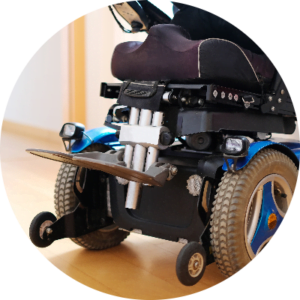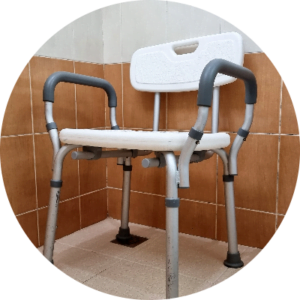NDIS Assistive Technology Assessment Process – A Step-by-Step Guide
Occupational Therapy and assistive technology (AT) are essential components of the National Disability Insurance Scheme (NDIS). The NDIS provides funding to individuals with a permanent and significant disability, enabling them to access support and services, including AT.
An AT assessment and report is a critical part of the NDIS planning process. It helps identify the most appropriate AT to meet the individual’s needs, taking into account their functional capacity, goals, and the environment in which they live.
If you’re a NDIS participant, you may be eligible for assistive technology to help you achieve your goals and live more independently. However, accessing the right equipment can be a daunting process, especially if you’re not familiar with the NDIS assistive technology assessment process.
Our step-by-step guide to the assistive technology assessment process helps you understand what to expect at every stage. From initial assessment to equipment delivery, we provide the support you need.
Step 1: Initial Assessment
The first step in the NDIS assistive technology assessment process is the initial assessment. This is usually conducted by a therapist, who will work with you to identify your needs and goals. The initial assessment may involve a review of your medical history, showing and doing things with the therapist, and home environment. Based on this information, your therapist may recommend assistive technology to help you achieve your goals.
Step 2: Referral to an Assistive Technology Supplier
Following the initial assessment, your therapist (with your consent) may refer you to an assistive technology supplier. The therapist and supplier will work with you to determine the most suitable assistive technology, (or equipment) for your needs. This may include trialling assistive technology, doing functional activities in your home or community with the assistive technology and assessing if the assistive technology is going to meet your needs. You may need to trial alternative options to provide a comparison, so you can work with your therapist to determine what is going to be the best assistive technology to meet your needs, based on your goals and NDIS reasonable and necessary criteria.
Step 3: Equipment Selection
Once the assessment, trial and evaluation of suitable assistive technology has been completed as part of the NDIS assistive technology assessment process, your therapist will work with you to select the most suitable assistive technology, obtain quotations, and provide a report outlining the clinical justification, functional improvements and outcomes with the assistive technology for the NDIS, commenting on the NDIS reasonable and necessary criteria.
Low-Cost/Low-Risk Aids or Small Aids
The following are some of the low-cost/low-risk aids or small aids that are commonly recommended in an AT assessment:
- Dressing aids
 Eating aids
Eating aids- Kitchen aids
- Visual aids
- Bath board
- Shower stool/chair
- Bath transfer bench
- Basic toileting aids
- Personal alarms
- Falls management AT
- Medication management aids
- Threshold ramps (up to 35mm)
AT Assessment and Report: Mid-Cost AT
For individuals requiring more substantial AT, an AT assessment and report will identify appropriate options.
The following are examples of some low or medium-cost/high-risk Assistive Technology that may be recommended:
- Step ramp up to 190mm
 Bed sticks
Bed sticks- Bidet
- Vehicle mods (passenger)
- Bedding (mattress prescription or electronic beds)
- Static seating (non-wheelchair)
- Scooter or manual wheelchair prescription
- Transfer (mobile hoist and sling)
- Power wheelchairs without complex seating needs
- Pressure care aids
- Augmentative and Alternative Communication (AAC)
- Gait and standing aids
- Sports and Leisure equipment
High Cost AT
For individuals with complex needs, high-cost AT may be recommended.

These may include:
- Ramps higher than 190mm
- Seating needs with swallowing, speech, and respiration needs
- Head and neck support needs
- Lifetime neurological conditions (seating)
- 24hr positioning (bed)
- Complex wheelchair prescription
- Ceiling track hoist
Step 4: Equipment Delivery and Installation
Once the funding has been approved, ordered and ready to be delivered, the therapist and assistive technology supplier will deliver and install it. In some cases, it’s a good idea to re-measure, or retrial equipment, to make sure the AT still suits your needs before order/manufacture. The supplier and therapist will provide you with education on how to use it and set it up to be tailored to your needs. Your therapist can provide you with ongoing support and evaluation to ensure that the assistive technology continues to meet your needs. This may also include regular maintenance and repairs, as well as modifications to the recently prescribed assistive technology.
Step 5: Review and Reassessment
The final step in the NDIS assistive technology assessment process is evaluation, review and reassessment. This involves regular reviews of your assistive technology to ensure that it continues to meet your needs. Your therapist may be able to adjust or work with a supplier to adjust and modify your existing assistive technology to ensure it continues to meet your needs. If your needs change, the assistive technology may need to be re-scripted or re-assessed to ensure you get the best outcomes.
Tips for a Successful NDIS Assistive Technology Assessment Process
The NDIS assistive technology assessment process can seem complex and overwhelming. Our therapists at National 360, will assist to guide you through the process and will work with you based on your needs and goals. We will work collaboratively with you and will encourage the points below to ensure a successful outcome:
- Communicate your needs and goals clearly: The more information you provide about your needs and goals, the more likely you are to receive assistive technology that meets your needs.
- Be prepared for the assessment: Make sure you have all the necessary information and documentation ready before the assessment, including your medical history, functional abilities, and home environment. Be prepared to be engaged in the assessment process, showing your therapist any problems you are experiencing and discussing what you would like to achieve.
- Ask questions: Don’t be afraid to ask questions if you’re unsure about any aspect of the assessment process, how the assistive technology works or any features of the assistive technology. The more you understand, the more comfortable and successful the assistive technology may be.
- Take your time: Don’t rush the assistive technology selection process, there are many items that perform specifically, and differently. Take the time to test different options and make sure you’re comfortable with the assistive technology before committing to the purchase. Ask your support people to be present at the appointment or to also try the assistive technology, if they will be helping you to use the assistive technology.
- Follow up regularly: Once you have received the assistive technology, make sure you follow up regularly with your therapist to ensure that it continues to meet your needs. If you have any concerns or issues, don’t hesitate to raise them with your therapist or supplier. Regular maintenance may also be required for your assistive technology.
Contact National 360 Today!
The NDIS assistive technology assessment process can be a complex and overwhelming process, but with the right support and guidance, it can be a positive experience that helps you achieve your goals.
If you would like to learn more about our assistive technology services, please click here to read more about how we can assist you or your participant in achieving their goals.
For all enquiries or referrals, please use the details below to get in touch with our friendly team:
Phone: 1300 340 440
Enquiry Form: Click here to complete.
Referral Form: Click here to complete.


 Eating aids
Eating aids Bed sticks
Bed sticks

